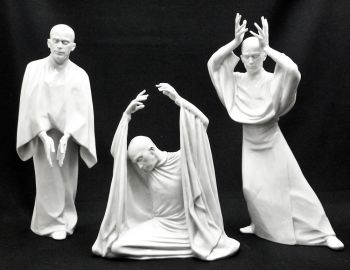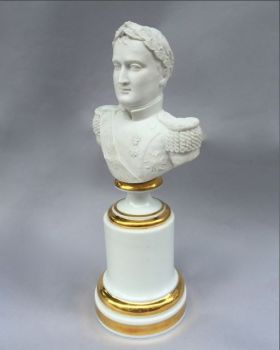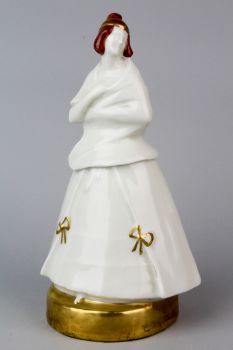Juliette Vesqe
Biografie1881 - 19621 kunstwerk te koop
Over de kunstenaar
Juliette Vesque was one of the two Vesque sisters. The other was named Marthe (1879-1949).
For a half-century (roughly from 1900 to 1950), Marthe (1879-1949) and Juliette (1881-1962) Vesque have documented the Parisian circus scene in meticulously precise paintings of circus artists in performance—about whom they often added fascinating information in their journal, which they wrote from 1904... Lees meerJuliette Vesque was one of the two Vesque sisters. The other was named Marthe (1879-1949).
For a half-century (roughly from 1900 to 1950), Marthe (1879-1949) and Juliette (1881-1962) Vesque have documented the Parisian circus scene in meticulously precise paintings of circus artists in performance—about whom they often added fascinating information in their journal, which they wrote from 1904 to 1947. They sketched their subjects live, at the circus or in variety theaters, which they frequented assiduously every week. Their unique art production constitutes perhaps the most remarkable visual documentation existing on the European circus of the first half of the twentieth century.
From 1901 to 1925, they worked for the Manufacture de Sèvres, the leading French porcelain manufacture, where they hand-painted floral decorations on plates, cups, vases, and other objects. They left the Manufacture when its decorative style changed with the Jazz Age (they didn’t like it anymore), and went on to work for the Museum d’histoire naturelle (Natural History Museum), where they painted zoological illustrations, specializing in entomology. They also illustrated specialized books on flora, and did several plates for the Larousse Encyclopedia.
For a half-century (roughly from 1900 to 1950), Marthe (1879-1949) and Juliette (1881-1962) Vesque have documented the Parisian circus scene in meticulously precise paintings of circus artists in performance—about whom they often added fascinating information in their journal, which they wrote from 1904 to 1947. They sketched their subjects live, at the circus or in variety theaters, which they frequented assiduously every week. Their unique art production constitutes perhaps the most remarkable visual documentation existing on the European circus of the first half of the twentieth century.
From 1901 to 1925, they worked for the Manufacture de Sèvres, the leading French porcelain manufacture, where they hand-painted floral decorations on plates, cups, vases, and other objects. They left the Manufacture when its decorative style changed with the Jazz Age (they didn’t like it anymore), and went on to work for the Museum d’histoire naturelle (Natural History Museum), where they painted zoological illustrations, specializing in entomology. They also illustrated specialized books on flora, and did several plates for the Larousse Encyclopedia.
























